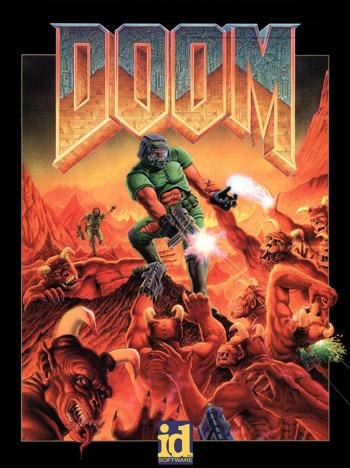Romero and Hall on creating Doom
GDC 2011: Doom cocreators discussed the two-year process of making the seminal first-person shooter.
Who was there: John Romero was the programmer, game designer, and level designer on the original Doom and is now developing a Facebook game at Loot Drop. Tom Hall also now works at Loot Drop and was the creative director and designer on Doom.

What they talked about: In 1993, id Software released the first-person shooter Doom. The game is noteworthy for coining the word "deathmatch" and supporting user-created mods through a feature known as WADs. The game was created by a small team of people at indie game developer id Software, which is now developing Rage and is owned by ZeniMax Media. Two of the key people behind Doom were John Romero and Tom Hall, and this year's Game Developers Conference marked the first time the two have ever done a postmortem on the classic shooter.
The story of Doom began in Madison, Wisconsin, in late summer 1991. The team at id moved there during a hot summer, but that soon turned to a bitterly cold winter. Romero showed an image of programmer John Carmack fighting through the snow to withdraw $11,000 from the bank so he could invest in a Next computer from tech entrepreneur Steve Jobs. Not that the computer was much use for making games. "We used the Next computer to do the [Wolfenstein 3D] hint manual," he said.
At the time, a publisher called Imagineer had asked id to port its last hit, Wolfenstein 3D, to the SNES, and the PC developer was only too happy to get its games onto consoles. "We hired a guy to start work on it," explained Romero, allowing the core team to concentrate on production of Doom. According to the pair, Carmack's vision was for one big world, whereas they were much more preferential to individual levels. They won out, and Romero began working on prototypes for individual levels through late 1992.
By January 1993, the game was well under way. "[Our] games never have preproduction--when we make something, it goes in the game," claimed Romero. However, two things transpired to dramatically postpone id's schedule. In March of that year, 20th Century Fox approached the studio to make a game based on the Aliens licence. Having seen what the studio did with Wolfenstein, Fox thought it may be in a good position to handle one of its biggest franchises, but after mulling it over, id turned the studio down. Then, around the same time, the person handling the Super Nintendo version of Wolfenstein 3D hadn't finished as planned, and Imagineer was not pleased. The whole id team jumped on the SNES port to get it out the door and managed to do so in just three weeks.
With Doom back on track for a couple of months in 1993, all seemed to be going well for id and the game. However, more troubles befell the studio in July when Tom Hall started to get creatively frustrated and left the company a month later. Hall departed for Apogee Software to work on Rise of the Triad and id hired Dave Taylor and Sandy Petersen to help fill the gap.
By December, id was applying the finishing touches to the game, or adding the "tonnes of polish" that it needed, according to Romero. The serial code for modems was created, as was the co-op mode, and that in turn coined the word "deathmatch." On December 10, 1993, Doom was uploaded to the University of Wisconsin's FTP server, but such was demand from people to get the game that three attempts were made to upload it before it was successful.
Quote: "For some reason, Nintendo did not like swastikas." Tom Hall on adapting Wolfenstein 3D for the SNES.
Takeaway: The creation of Doom wasn't a smooth process, and it was beset by a number of major problems. However, it's a game that both men are obviously proud of, and despite parting before the project was finished, they are now working together again. "I loved deathmatch, but now I feel like I'm going slowly through the world," said Romero, when asked about modern online shooters. "It's not as much fun for me. As a designer, it's way more challenging to try and get back to the roots of what's fun and make it palatable for a mass audience."
Got a news tip or want to contact us directly? Email news@gamespot.com
Join the conversation